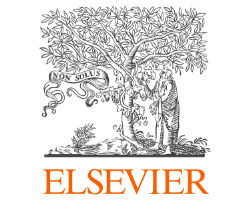Preliminary on Human Driver Behavior: A Review
Abstract
Drowsiness is one of the main factors causing traffic accidents. Research on drowsiness can effectively reduce the traffic accident rate. According to the existing literature, this paper divides the current measurement techniques into subjective and objective ones. Among them, invasive detection and non-invasive detection based on vehicles or drivers are the main objective detection methods.Then, this paper studies the characteristics of drowsiness, and analyzes the advantages and disadvantages of each detection method in practical application. Finally, the development of detection technology is prospected, and provides ideas for the follow-up development of fatigue driving detection technology.
Downloads
References
I. T. Forum, Road Safety Annual Report 2017, OECD iLibrary, 2017.
M. Goncalves, R. Amici, T. Lucas, F. Kerstedt, J. Cirignotta, D. Horne, W. T. Lger, M. McNicholas, J. T-S. Partinen, P. Peigneux, and L. a. Grote, “Sleepiness at the wheel across Europe: a survey of 19 countries,” Journal of Sleep Research, vol. 24, no. 3, 2001.
P. A. Hancock, 3.1 Active and Passive Fatigue States [J]. Stress, workload, and fatigue.
C. George, “Driving and automobile rashes in patients with obstructive sleep apnoea/hypopnoea syndrome [J],” Thorax, vol. 59, no. 9, 2004.
S. Kaplan, A. G. Yavuz, and Y. Karalurt, “Driver Behavior Analysis for Safe Driving: A Survey,” ITS, vol. 16, no. 6, 2015
L. Lin, “Driver fatigue detection based on eye state, Technol,” Health Care, vol. 23, no. 2, 2015.
D. Costa, “A fadiga na condução,” in Autoridade Nacional Segurança Rodoviária, 2014.
Y. Saito, M. Itoh, and T. Inagaki, “Driver assitance system with a dual control scheme: effectiveness of identifying driver drowsiness and preventing lane departure accidents,” IEEE Transactions on Human-Machine Systems, vol. 46, no. 5, 2016.
M. Sabet, R. Zoroofi, K. Haghighi, and M. Sabbaghian, “A new system for driver drowsiness and distraction detection,” in Iranian Conference on Electrical Engineering, Tehran, 2012.
I. H. Choi, and Y. G. Kim, “Head pose and gaze dircetion tracking for detecting a drowsy driver," in International Conference on Big Data and Smart Computing, Bangkok, 2014.
Z. Ma, B. C. Li, and Z. Yan, “Wearable driver drowsiness detection using electrooculography signal,” in IEEE Topical Conference on Wireless Sensors and Sensor Networks, 2016.
T. Hwang, M. Kim, S. Hong, and K. S. Park, “Driver drowsiness detection using the in-ear EEG (electroencephalogram),” in IEEE 38th Annual International Conference of the Engineering in Medicine and Biology Society, Orlando, 2016.

























